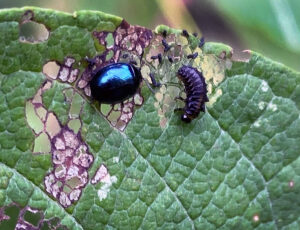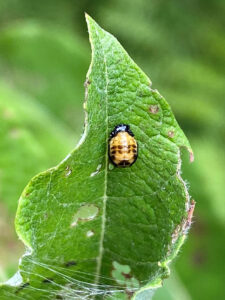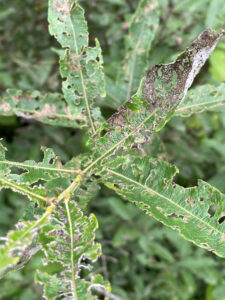
An imported willow leaf beetle adult and larvae. / Photo Credit: Wisconsin DNR
By Linda Williams, DNR Forest Health Specialist, Woodruff
Linda.Williams@wisconsin.gov, 920-360-0665
Imported willow leaf beetle (Plagiodera versicolor) is a small, shiny, blue-black beetle as an adult, and the larvae are small, solid black and spikey. Both feed on the foliage of willow and poplar species. Two generations per year are possible.
The invasive pest was first detected in the United States in 1915, likely coming from eastern Europe.
Adults eat holes in the leaves or along the leaf edges, while the larvae skeletonize the leaves, leaving a lacy network of veins.
Willow trees can be almost completely defoliated and still survive, but successive years of complete defoliation can weaken the tree, cause dieback or even mortality.
Control is not usually recommended because defoliation rarely kills the trees and shrubs. Predators and parasites usually keep populations in check and prevent successive years of complete defoliation.

Imported willow leaf beetle pupae don’t look much like either the larvae or the adults. / Photo Credit: Wisconsin DNR

Although this much defoliation may look like a problem, willow trees and shrubs will survive this feeding by willow leaf beetles. / Photo Credit: Wisconsin DNR
